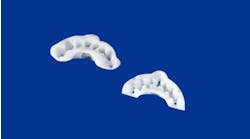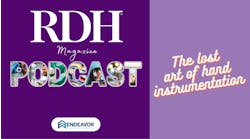For the better part of a decade, the tomes housing the first 96 years of Dental Economics have been anywhere from six to 15 feet from me, depending on whatever RDH task I happen to be performing. The bookshelves form a hallway of sorts outside my workspace.
An in-flight magazine recently explained to me how you can read every scrap of information stacked side-by-side on those bookshelves on something the size of a pocket calculator. It dawned on me then that those tomes might have a limited shelf life. A guy in coveralls and pushing a dolly could cart everything off in one night.
I would exclaim, “The bookshelves are gone! What if I have to look something up?”
“Go to dentaleconomics.com. You'll find anything you need there.”
Well, OK then. But would I miss the proximity of these bound copies of dentistry's oldest trade publication? I'm not sure if I'm ready. I feel a little clingy. I'm not ready for some sort of robotic librarian.
“I'd like to see the table of contents for the August 1923 copy of Dental Economics.”
“Please enter access code.”
“I don't know what it is.”
“Please see Vice President of Archival Security for authorization code. Goodbye.”
Such a “get lost” referral from a piece of machinery would be vexing to me. If the robot is on the small side, such as one of those 90-pound weaklings from the beach, I might stomp on it and kick it a few times. But if it's a hefty cyborg, or has anything resembling a dental laser sticking out of it, I'll just defer with, “Sorry to bother you. I'll catch up with you after I get the authorization.”
By the way, the cover of the August 1923 issue of Oral Hygiene (the original name for Dental Economics) featured an illustration of a guy smoking a pipe and fly fishing in a mountain stream.
The lead story, according to the table of contents, is titled, “Golfodontia.” One early paragraph in the article states, “A dentist is well suited for golf both by affluence and disposition.”
My favorite sentence in the article is: “In niblicking out of a sand pit, he [dentist] can apply all the clearness, force and elegance he has acquired in convincing an amalgam patient that, without a full extraction and a complete set of store teeth, he will be guest of honor at a lawn party at some nice, quiet cemetery.” Well, OK then.
(In fairness to any editors' ghosts still patrolling this joint, “Golfodontia” was followed by statistical reports on dental disease and care in Indiana, Toledo, and Los Angeles County.)
If we leapfrog ahead 42 years to August 1965, Oral Hygiene (which added Dental Economics to its name in 1967) devoted its first feature article to “Good public relations start in the chair: Explain the advantage of your plan of restoration to the patient and avoid confusion and distrust.” Familiar territory, eh?
However, the two cover articles in that 1965 issue discussed the projection of 15 million Americans with some form of dental insurance by 1970. The primary purpose of dental insurance was to “encourage the distribution of dental services ... at a cost reasonable to both the patient and the dentist.”
Good thing everything has been reasonable and uncontroversial about dental insurance for the last 40-plus years. Yeah, right.
Go forward almost 43 years to the June 2008 issue, and Dental Economics profiles a middle-aged dentist from Nashville who integrates high technology (not around in 1923) into a practice offering a variety of care options (not around in 1923). The evolution of dentistry has been pretty remarkable. History A to Z: You conquered overwhelming disease, agreed to a reasonable fee to keep disease banished, and now new frontiers excite you.
No technology was harmed in the preparation of this article.
by Mark Hartley
[email protected]
http://www.myspace.com/MarkhRDH





